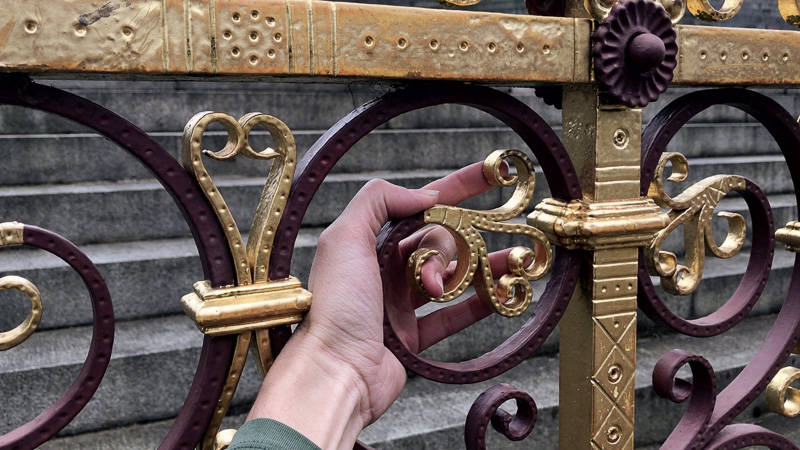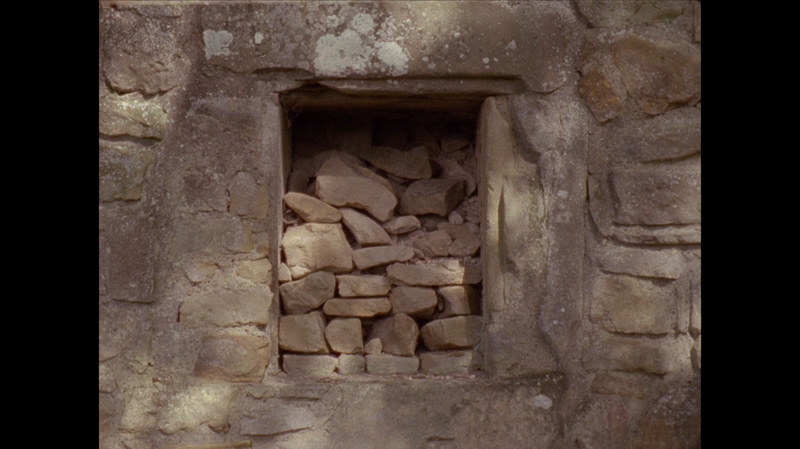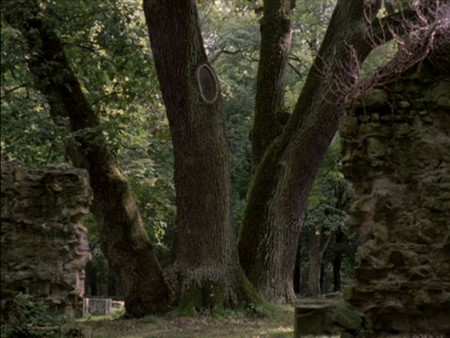Throughout the 25 minutes of a hook but no fish, Spong layers imagery, sound and language to remarkably emotive effect. The opening passage moves between lush chlorophyll-green forests, moss-clad ruins and plants filmed through a red filter. Sound, like the imagery, resonates through accumulation.[7] Melodious birdsong is given a percussive rhythm through the steady tempo of footsteps striking a stone surface, echoed later in the percussive beat of drums. Water flows, bells chime, leaves crackle, choristers sing. The earth teems with worms, fallen apples are left to rot. The textural density of a hook but no fish, like much of Spong’s work, writes its own kind of language. There is a moment, early in the film, that I experience bodily each time I watch it. An empty stone window cavity is filled with carefully stacked brick-shaped stones, the threshold becoming a barrier. The following frame shows a close-up of gently swaying leaves, the whole image flaring burnt-red through a coloured filter. A sudden blaze of sound flares like a match-strike as the two images are overlaid, the reddened flicker of leaves dancing across the blocked window like a flame. It feels like the blaze of resistance.
The bodies of women appear too, but they are evasive, difficult to pin down. One woman sits in a sparse room, the light cast through the window plays off the transparent sheeting that is draped over her, casting a dance of gold onto the wall behind her. Another woman appears in a set of six contemporary photographs. Tightly cropped, heavily pixelated images of her body are almost indecipherable. Text unspools across the images:
‘it’s impossible to know if it’s really her or not, and even though it might not be her, it still feels like her’.
These women’s bodies exist in precarity, they are at once themselves and substitutes for others: von Bingen, Spong, and ourselves. They become something undefined, unruly and, perhaps, free. Spong’s films are vessels in which the multivocality of transhistorical women’s voices can coexist. As these voices and bodies coalesce, they work to resist the systems of power that seek to constrain them. They begin to slip free, to bleed together, to pulse forth with abundancy – like a broth, like a potion, like a cure.




